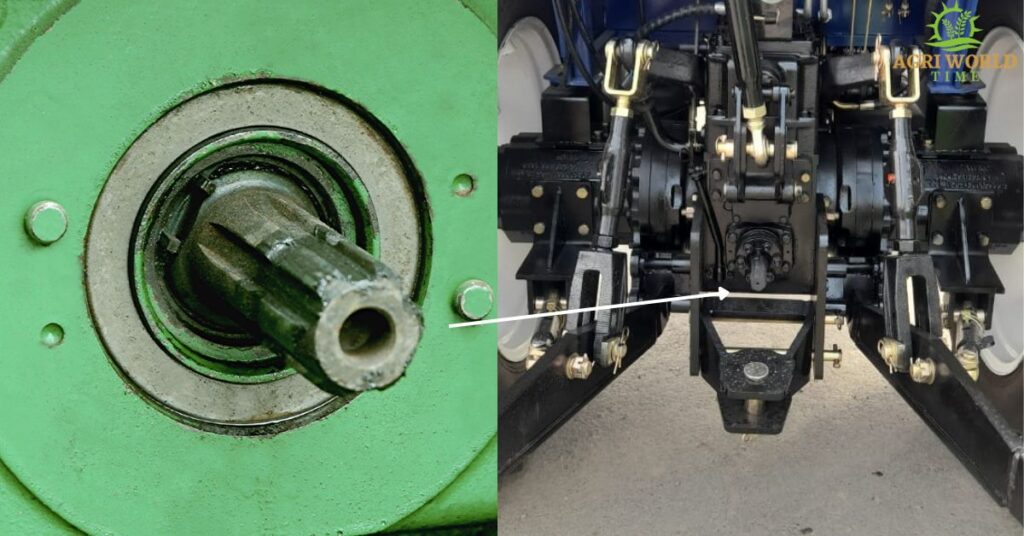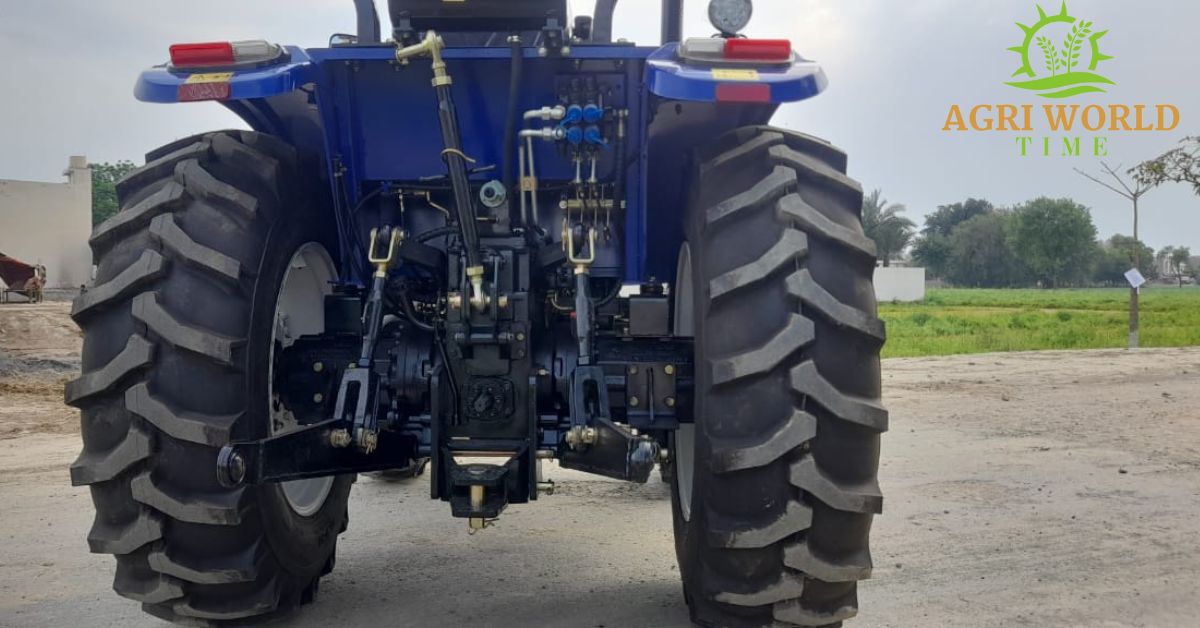A power take-off, or PTO, is an essential component of modern tractors and other agricultural machinery. This versatile device allows farmers to harness the power of their tractors to operate a wide range of attachments and implements. It transfers power from plows and mowers to grain augers and manure spreaders.
The PTO is essentially a driveshaft that connects the tractor’s engine to the attachment or implements. When the tractor’s engine is running, the PTO shaft spins, providing the power necessary to operate the attachment. This makes it possible for farmers to perform a variety of tasks quickly and efficiently, saving time and labor.
PTOs come in a variety of sizes and configurations. It depends on the specific needs of the farmer and the type of equipment being used. Some PTOs are designed to be mounted on the rear of the tractor, while others are mounted on the front or side. There are also different types of PTOs, such as mechanical and hydraulic, which operate in slightly different ways.
In this blog, we’ll explore the various types of PTOs and how they work, as well as their many applications in modern agriculture. We’ll also discuss the importance of proper PTO maintenance and safety. It will help farmers to continue to rely on this essential component for many years to come.

How Does a PTO Work?
A Power Take-Off (PTO) is a mechanism that transfers power from a tractor engine to various agricultural implements, such as plows, mowers, balers, and other equipment. PTOs are designed to be versatile and adaptable. It enables farmers to use one tractor to operate a variety of different implements.
The basic concept behind a PTO is relatively simple. The PTO is essentially a rotating shaft that extends from the tractor’s engine and connects to the implement. When the tractor’s engine is running, it causes the PTO shaft to rotate, which in turn powers the implement.
To use a PTO, farmers must attach the implement to the tractor’s PTO shaft using a specialized coupling device. Once the implement is attached, the farmer engages the PTO by activating a lever or switch. This causes the PTO shaft to rotate, which in turn powers the implement.
One of the key benefits of a PTO is its versatility. Because it is a simple mechanical device, PTOs can be used to power a wide range of implements, from mowers and plows to grain augers and manure spreaders. This makes PTOs an essential component of modern agriculture, enabling farmers to perform a variety of tasks quickly and efficiently.
Types of PTOs
There are generally three main types of Power Take-Offs (PTOs) commonly used in various industries and applications. These types are:
Mechanical PTO
Mechanical Power Take-Off (PTO) is the most common type of PTO and has been in use for many years. Mechanical PTO uses a series of gears to transfer power from the tractor engine to the implement. These gears are housed in a gearbox located near the tractor’s rear axle.
Mechanical PTO is generally more durable and reliable than hydraulic PTO. It is relatively easy to repair and maintain. However, it can be more difficult to engage and disengage, especially when the tractor is in motion.
One advantage of mechanical PTO is that it is available at a range of speeds. It depends on the specific needs of the farmer and the equipment being used. Some mechanical PTOs can provide a range of speeds, while others are fixed at a specific speed.
In addition, mechanical PTO is often less expensive than hydraulic or live PTO. It makes them a popular choice among farmers.
One of the key drawbacks of mechanical PTO is that it can be difficult to engage and disengage when the tractor is in motion. This can make it challenging to switch between implements quickly, which can slow down work and reduce efficiency. Additionally, mechanical PTO can generate more heat and noise than other types of PTOs, which can be a nuisance for the operator.
Hydraulic PTO:
Hydraulic Power Take-Off uses hydraulic fluid to transfer power from the tractor engine to the implement. Hydraulic PTO is often used in conjunction with hydraulic systems on the implement. It enables the farmer to control both the power and the hydraulic functions of the implement from the tractor cab.
Hydraulic PTO offers several advantages over mechanical PTO. It is generally easier to engage and disengage, especially when the tractor is in motion. This can make it easier to switch between implements quickly and efficiently.
In addition, hydraulic PTO can provide a range of speeds. This can make hydraulic PTO more versatile than mechanical PTO.
One of the main drawbacks of hydraulic PTO is that they can be more complex and expensive than mechanical PTOs. They also require regular maintenance to ensure that the hydraulic fluid is clean and free from contaminants.
Live PTO:
Live PTO is a specialized type of PTO. It allows the farmer to engage and disengage the PTO while the tractor is in motion. Live PTO uses a specialized clutch system to connect and disconnect the PTO shaft from the tractor engine.
Live PTO offers several advantages over mechanical PTO. It is easier to engage and disengage, which can make it easier to switch between implements quickly and efficiently. In addition, live PTO is more versatile than mechanical PTO because it allows the farmer to control the speed of the PTO shaft independently of the tractor’s speed.
One of the main drawbacks of live PTO is that it can be more complex and expensive than other types of PTOs. They also require regular maintenance to ensure that the clutch system is in good working order.
PTO Maintenance and Safety Lubrication and Inspection
PTOs are powerful components that require proper maintenance and safety measures to ensure safe and efficient operation. Here are some key considerations for maintaining and operating PTOs safely:
Lubrication and Inspection:
PTOs require regular lubrication and inspection to ensure smooth and efficient operation. Farmers should follow the manufacturer’s recommendations for lubrication and inspect the PTO for signs of wear or damage, such as cracks or bent components.
Safety Shields and Guards:
PTOs should be equipped with safety shields and guards to protect operators from moving components. Safety shields should be securely fastened and in good condition, and operators should never remove or bypass safety shields or guards.
Proper Use and Handling:
Operators should use PTOs only for their intended purposes and follow safe handling procedures, such as disengaging the PTO before leaving the tractor or dismounting. Operators should also avoid wearing loose clothing or jewelry that could get caught in the PTO. Never attempt to service or repair the PTO while it is in operation.
Overall, proper maintenance and safe operation of PTOs are essential for reducing the risk of accidents and injuries. By following recommended lubrication and inspection procedures, installing safety shields and guards, and using PTOs only for their intended purposes and in accordance with safe handling procedures, farmers can ensure the safe and efficient operation of this critical component.
Conclusion:
In conclusion, a Power Take-Off (PTO) on a tractor is a mechanical device that transfers power from the tractor’s engine to various agricultural implements or equipment. It enables the tractor to provide rotational power to operate machinery such as mowers, balers, tillers, and augers. The PTO is typically located at the rear of the tractor and consists of a rotating shaft that connects to the implement. This allows the implement to be powered by the tractor’s engine while maintaining the tractor’s mobility. PTO is very important in the agricultural industry. It provides a reliable and efficient method of transferring power from tractors to a wide range of implements, ultimately enhancing productivity and versatility on the farm.
FAQS
What is a PTO?
A PTO is a mechanical component on a tractor that transfers power from the engine to operate other machinery or implements, such as mowers, balers, plows, tillers, seeders, spreaders, and grain augers.
What are some common applications of PTOs in agriculture?
PTOs are commonly used to power a wide range of implements and equipment in agriculture. It includes mowers, balers, plows, tillers, seeders, spreaders, and grain augers.
Can PTOs be controlled?
Yes, PTOs can be controlled. The engagement and disengagement of a PTO are typically controlled by a lever, switch, or clutch mechanism within the vehicle’s cab or control panel. This allows the operator to start and stop the power transfer as needed.
Are there safety considerations when using a PTO?
Yes, operating a PTO requires adherence to safety guidelines. It is essential to follow manufacturer instructions, ensure proper guarding and shielding, and avoid loose clothing or entanglement hazards. PTOs should only be engaged or disengaged when the engine is off, and operators should exercise caution to prevent accidents or injuries.

